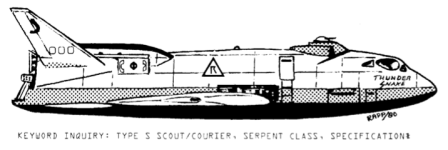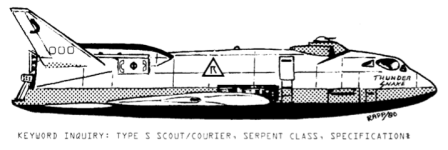Not 20, 19.8. The collapsed tank still takes 1% of its capacity
Actually ... I think you'll find ... LBB A5, p13:
When not in use, collapsible tanks collapse and are stored in the cargo hold; they take up 1%of their filled tonnage.
A 20 ton collapsible fuel tank occupies 20 tons when full ... and 0.2 tons when empty.
So a 40 ton cargo bay with a 20 ton collapsible fuel tank moves between the following options:
- 20 tons of cargo space and 20 tons of fuel inside collapsible fuel tank (full of fuel)
- 39.8 tons of cargo space and 0.2 tons of collapsible fuel tank (empty of fuel)
In a lot of scenarios you would want to have that 40 tons of cargo space available if the collapsible fuel tank is empty, so you would ordinarily allocate (in this example) ... 40 tons for cargo bay and another 0.2 tons for the collapsible fuel tank, for a combined 40.2 tons allocation.
This is where having a "spare ton of cargo hold space" available comes in handy (82 tons, 61 tons, 46 tons, etc.) that isn't divisible by 5 (minor cargo) or 10 (major cargo). It gives a ship "leftover space" to work in these kinds of aftermarket modification options if the owner/operator wants to include them.
Jump B is all that's needed.
Jump-B is all that's needed in a
purely internal only Traveller universe mandated by the Referee.
As soon as you start allowing "external load capacity" to be used ... Jump-C becomes a VERY obvious choice (+10MCr to the build cost in order add +200 tons of external loading capacity through jump?
WHERE DO I SIGN?!?!)
the XBoat hull should be a second standard in the 100Td range based on quantity in service.
Actually, the LBB2.77 XBoat
does use a 100 ton standard (not streamlined) hull ...

Jump-B = 4 parsecs for 15 tons
Maneuver-none
Power plant-none
It's just the LBB2.81 rules that mess that up ... requiring a power plant for a jump drive.
LBB2.77 only required a power plant for the maneuver drive ... and since XBoats don't have maneuver drives ...

LBB2.77, p13:
The installed power plant must be of a letter type at least equal to the drive letter of the installed maneuver drive (the power plant letter may be higher than the maneuver drive letter).
It also suggests that all ships with standard hulls of a given size and streamlining characteristics look alike. A streamlined version of the Type Y would look like a Type A; a non-streamlined Type A would look like a Type Y.
That's an overly broad interpretation.
In LBB2 starship design, the only thing that Streamlining does is enable atmospheric entry. It does not ipso/facto mean that all streamlined craft use exactly the same configuration. It took until HG and the options for configuration for that to become relevant in the way you're describing.
Yes, from a price parity perspective, every LBB2 streamlined craft amounts to a Cone Configuration under HG ... but that's an "after the fact" kind of translation discovery.
The hilarious thing is ... with gravitics technology, streamlining ISN'T NEEDED for atmospheric entry!
If maneuver acceleration power available exceeds local gravity, a craft can "orbital geosynch" using maneuvering power at ANY distance and then ascend/descent in synchronous rotation with the world body.
It's like the difference between CTOL and VTOL.
For a no maneuvering power entry into atmosphere, you have to "wipe off" a LOT of delta-v through friction with any atmosphere ... hence the need for streamlining. Essentially, you have to "hit the atmosphere fast" and then use the atmospheric braking to slow you down to sub-orbital velocities through atmospheric entry. Much like CTOL ... this is the "land then stop" order of operations (hit the atmosphere first, then come to a stop).
That all changes with continuous acceleration maneuvering power.
With maneuvering power, the entire atmospheric entry procedure and flight profile changes radically. You use your maneuvering power to geosynch while orbiting ... and then slowly descend down into the atmosphere while sustaining maneuvering power to continuously geosynch through the descent. Much like VTOL ... this is the "stop then land" order of operations (come to a stop over your landing zone first, then lower altitude until contact).
The consequences of this would then be that Streamlined craft can use aerobraking entry flight profiles (which are fast enough to descend in minutes!) while Partially Streamlined craft would be force to use geosynch entry flight profiles (which are slow and could take hours/days to maneuver through). The Streamlined craft are "nimble" in atmosphere and can use atmosphere to their advantage ... while the Partially Streamlined craft are "lumbering" in atmosphere and need to move like ... well ... oversized air/rafts.




